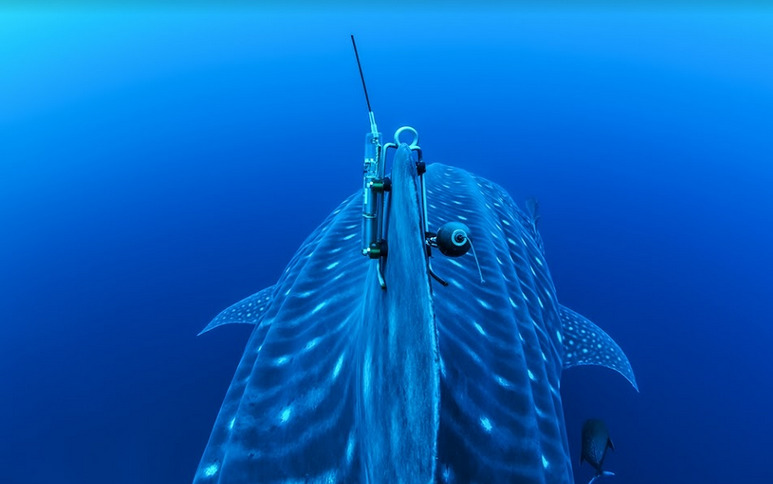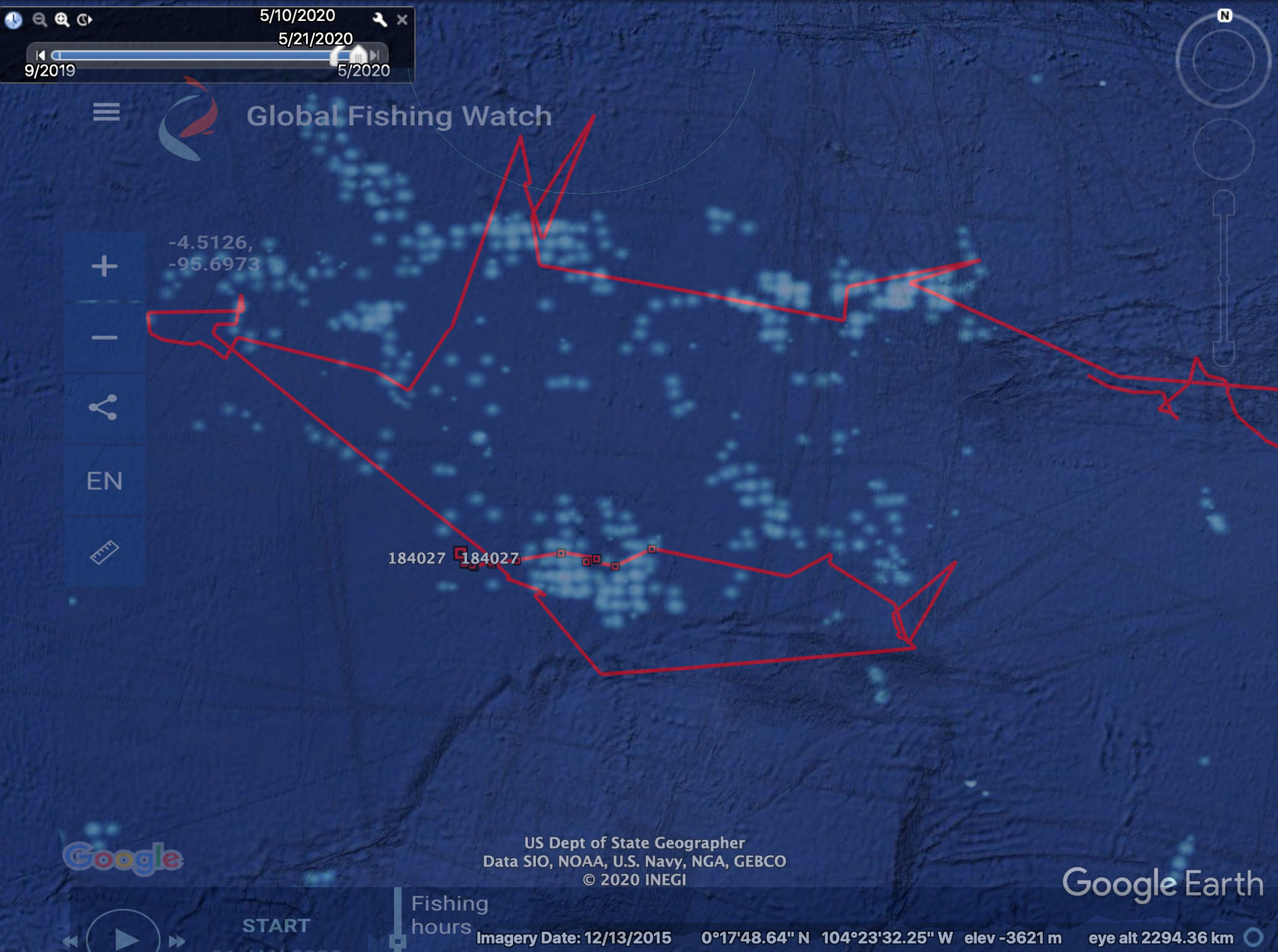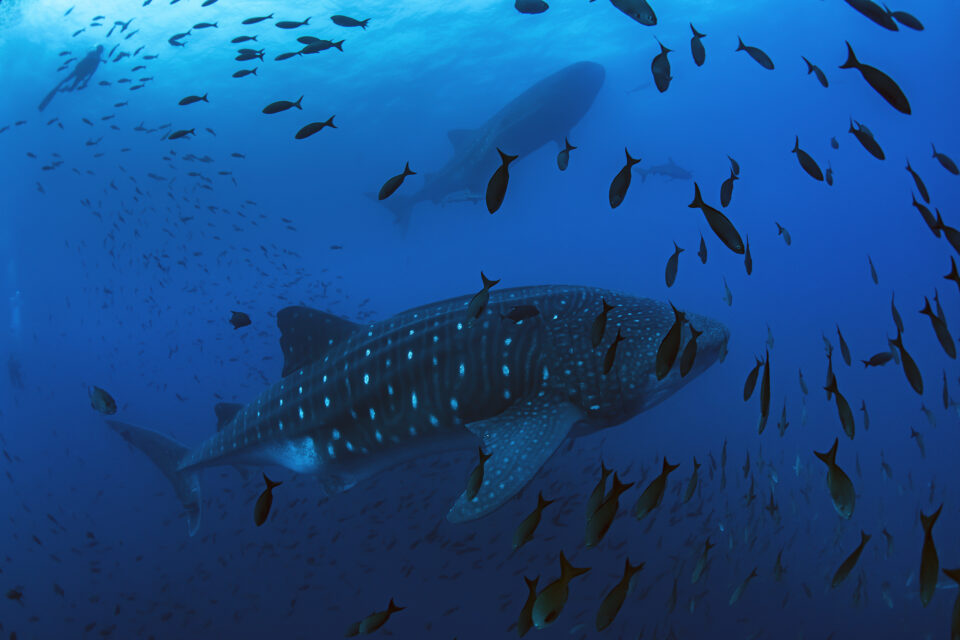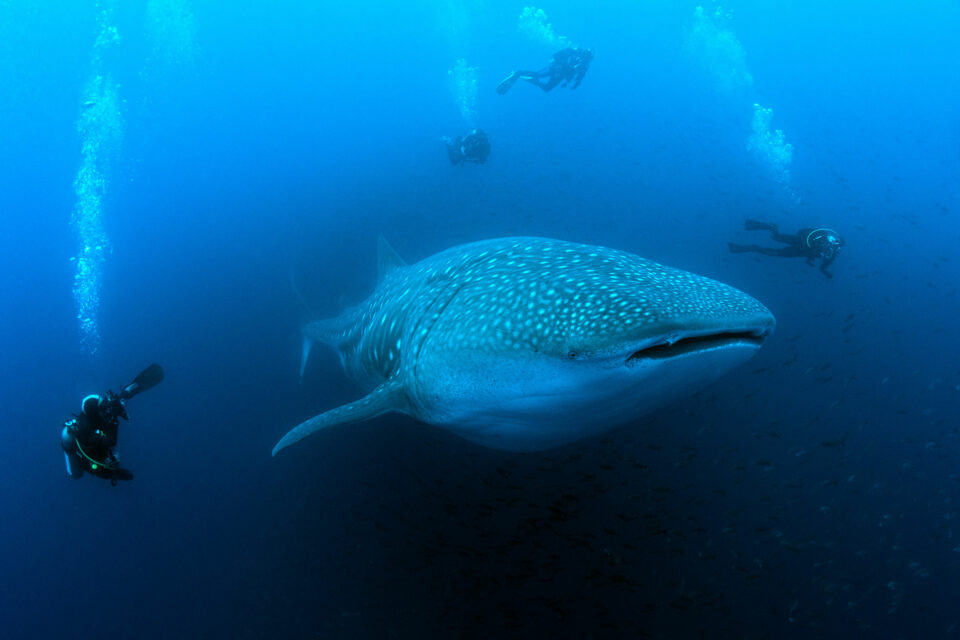
Losing Hope
After eight months, Hope the whale shark's GPS tag has stopped pinging, leading to worries of her whereabouts after heading to an area of high fishing near the Galapagos Islands.
Back in September 2019 a juvenile, seven-metre female whale shark, #184027, was tagged with state-of-the-art tracking equipment off the coast of Darwin island, Galapagos by our project partners at the Galapagos Whale Shark Project.
She headed west after leaving the Islands and the tags transmitted her location continuously over eight months. Her track was indicating a loop that made the team think she could be the first whale shark ever to be tracked leaving and returning to the Islands. Therefore they aptly named her “Esperanza” which is Hope in Spanish.

By the end of May, Hope’s tag stopped transmitting in the high sea and, for a while, waited to see if she would pop-up again. After a month of no news, the team decided to check her last transmission.

What the team saw:
- During the last 30 minutes of data from when the tag was active the signal was very clear. This indicates the tag was most likely entirely out of the water.
- The whale shark covered a long distance in these last minutes which showed her travelling at around 7-8 knots. Whale sharks can reach a max speed of 3 knots and usually cruise at approximately 1.5 knots.
- She was located in an area of extreme fishing pressure and high risk of capture.
- Two other tagged whale sharks have also recently stopped pinging in the same area.
“We cannot say for certain what happened to her and cannot be sure that she was captured.” – Galapagos Whale Shark Project

The only way of ever knowing what happened to Hope would be if her tag started to ping again or if she were sighted again, either in Galapagos or elsewhere in the world, and reported on the Wildbook for Whale Sharks.
The wider issue
There has been a dramatic decline globally in whale shark numbers. Data suggests an almost 50% reduction in population size over the last 75 years. Unfortunately, these enormous sharks are categorised on the IUCN Red List of Endangered Species as Endangered. Although listed on Appendix II of CITES and protected across much of their range, they are still targeted by illegal, unregulated and unreported fisheries for their fins, oil and meat. They are also susceptible to being hit by vessels in shipping lanes which can cause fatalities.
What we’re doing
The story of Hope highlights the high-risk to whale sharks whenever they leave a Marine Protected Area (MPA) like the Galapagos Marine Reserve. It also shows the importance of expanding our MPAs and writing new laws to protect these endangered species. Galapagos Conservation Trust has been supporting the proposed Cocos-Galapagos Swimway since 2018 by helping our science partners gather important evidence needed to drive forward the creation of this 120,000 km2 route.
There is so much we don’t yet know about these majestic ocean giants. We are still to discover where they go to breed, give birth and spend the first few years of their life. These basic life history elements are not only interesting to know but also crucial if we are to conserve this gentle giant successfully. The ground-breaking Galapagos Whale Shark Project hopes to deliver some of these vital insights into their lives and save this endangered species.
Ways to get involved
Please donate to GCT to support projects like our Endangered Sharks of Galapagos programme, which aims to protect whale sharks and other species within and outside of the Galapagos Marine Reserve.
Galapagos Conservation Trust’s work on the proposed Cocos-Galapagos Swimway benefits from the support of the Prince Albert II of Monaco Foundation.

By Beth Byrne
Related articles

Ocean Protection Webinar 2023

Tagging a new constellation of whale sharks


